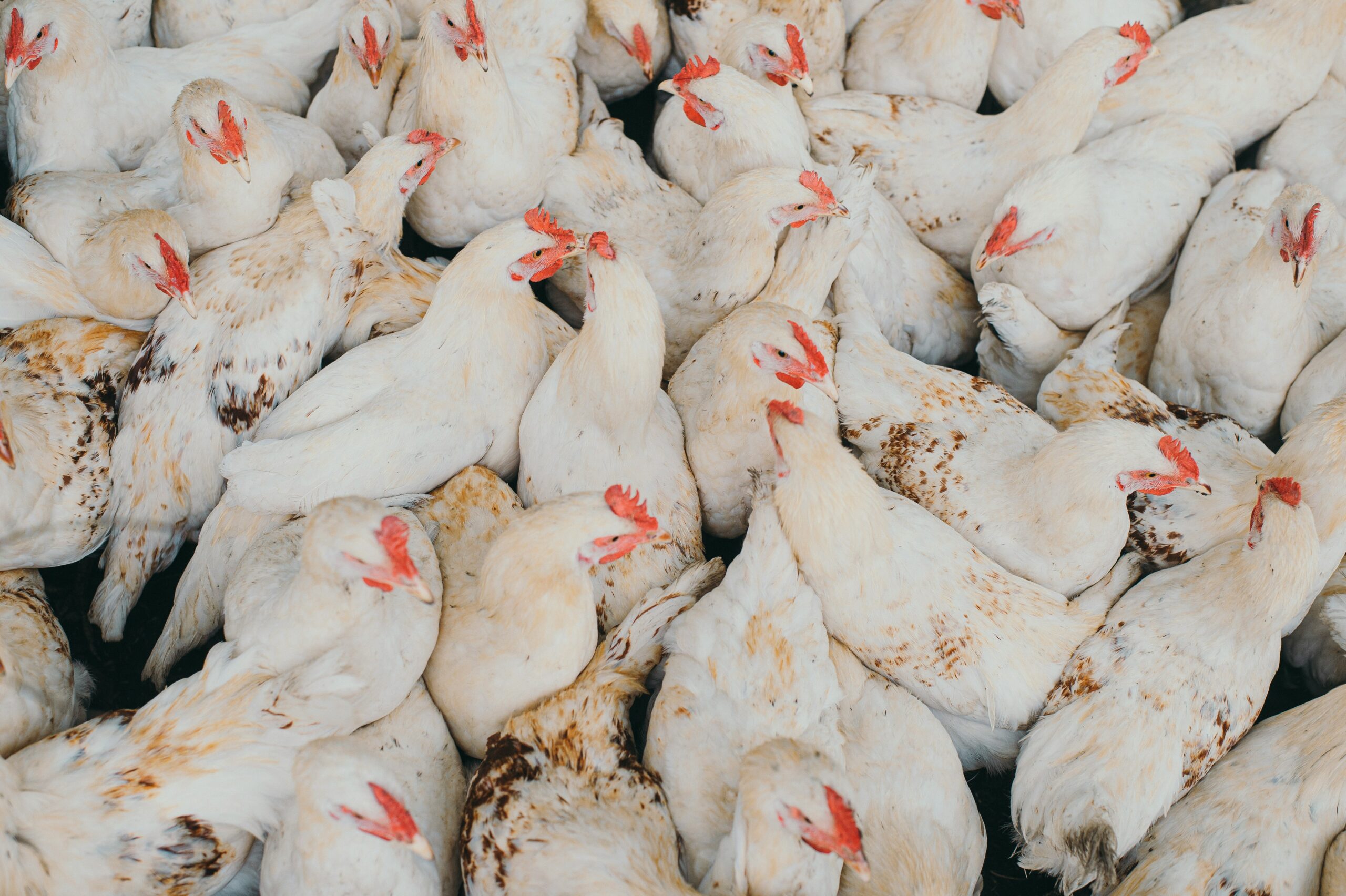How to Insulate a Chicken Coop
Raising backyard chickens comes with its share of responsibilities—one of the most crucial being proper insulation. A chicken coop that’s well-insulated protects your flock from extreme weather, keeps them healthy, and even boosts egg production. Whether you’re prepping for harsh winters or hot summers, knowing how to insulate a chicken coop can make all the difference.
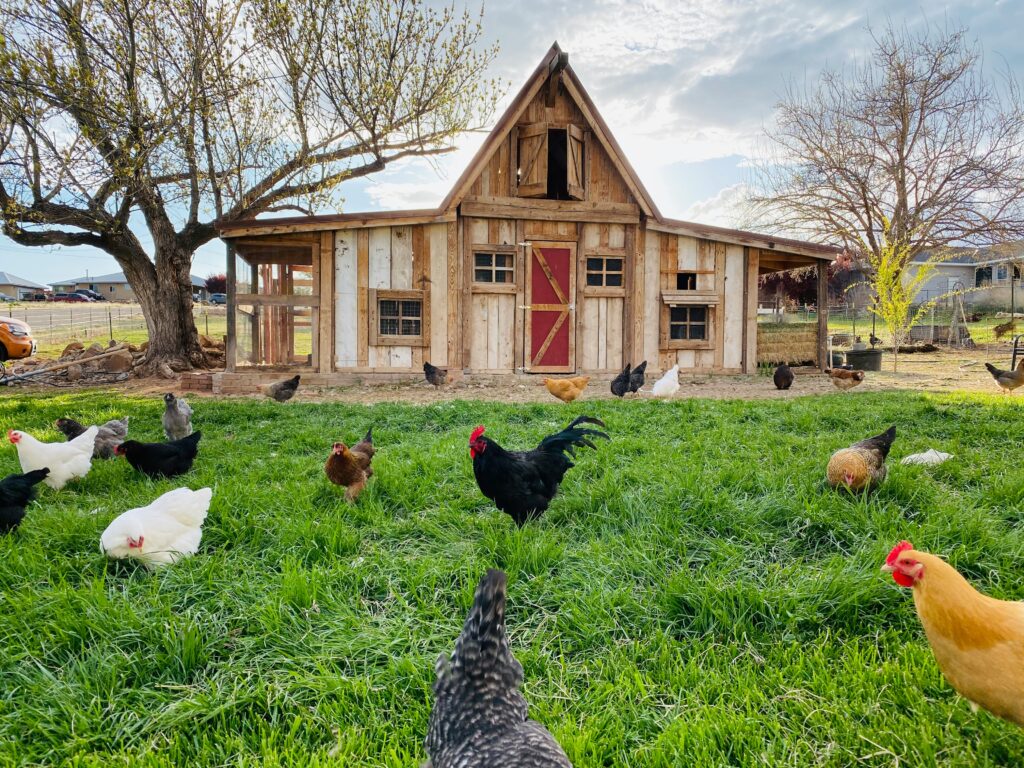
Photo by Dani Millington on Unsplash
Understanding Why Insulation Matters
Benefits of a Well-Insulated Chicken Coop
When your coop maintains a stable temperature, chickens thrive. Insulation acts like a thermal blanket, keeping warmth in during winter and repelling heat during summer. This helps reduce stress in chickens, lowers energy consumption for heating devices, and contributes to a stable egg-laying pattern. Plus, an insulated coop is more comfortable to clean and manage.
How Insulation Improves Chicken Health and Egg Production
Chickens, especially heritage breeds, are tough—but they’re not immune to frostbite or heatstroke. Insulation minimizes temperature swings that can otherwise lead to illness or stress-induced molting. Consistency in temperature directly affects their laying rhythm, so a cozy coop equals a productive flock.
Choosing the Right Insulation Material
Pros and Cons of Common Insulation Types
Here’s a quick comparison of popular insulation materials:
| Material | Pros | Cons |
| Fiberglass | Affordable, effective | Needs sealing, not chicken-safe exposed |
| Foam Board | Easy to install, moisture-resistant | Costly, must be covered |
| Reflective Foil | Blocks radiant heat, lightweight | Less effective in cold weather |
| Straw or Hay | Natural, compostable | Attracts pests, flammable |
| Spray Foam | Seals gaps well | Expensive, can off-gas when fresh |
Eco-Friendly and Chicken-Safe Insulation Options
If you’re leaning green, consider recycled denim insulation, shredded newspaper (in sealed walls), or reused styrofoam containers (safely installed). Make sure the material isn’t exposed—chickens are notorious peckers!
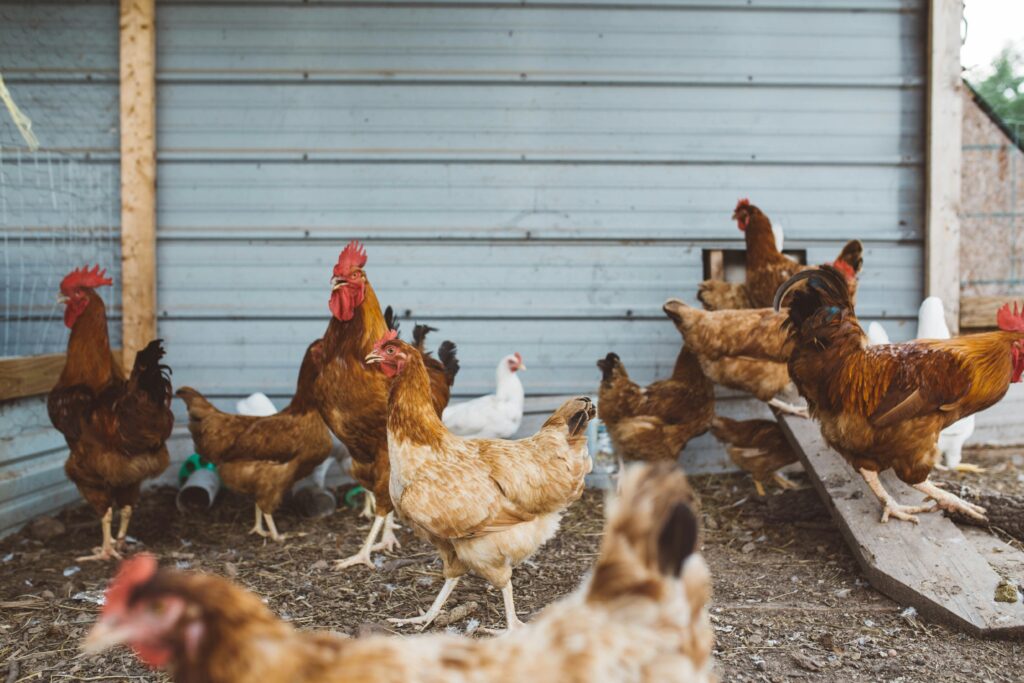
Photo by Brooke Cagle on Unsplash
Ideal Temperature Range for Chickens
Seasonal Temperature Needs for Backyard Chickens
Generally, chickens prefer a range between 45°F to 75°F. Cold-hardy breeds manage better in winter, while heat-tolerant breeds still need cool shade in summer. The key? Avoid rapid temperature changes.
Preventing Frostbite and Overheating
Frostbite usually affects combs and wattles. To prevent it, ensure your insulation works with proper ventilation. In summer, avoid trapping heat—use reflective barriers and shade cloths to reduce overheating.
Insulating Chicken Coop Walls
How to Insulate Wooden Walls Effectively
Start by checking for cracks and drafts in the coop’s frame. For new builds, add insulation batts or foam board between studs before sheathing. For existing coops, you can line the interior with thin plywood or plastic paneling to sandwich in the insulation.
Handling Gaps, Cracks, and Drafts
Use weather-stripping tape or spray foam to fill gaps. Pay special attention around nesting boxes and roosts. Chickens sleep close together, so minimizing drafts at night is crucial.
Insulating the Roof of the Coop
Best Roof Insulation Techniques for Winter and Summer
The roof takes a beating from sun and snow. Use foam board under the roof or between rafters. Reflective insulation is great for hot areas. Don’t forget to seal off leaks, and keep snow loads from caving in lightweight materials.
Moisture Barrier and Ventilation Strategies
Always install a vapor barrier when using materials that can trap moisture. A wet coop breeds mold and respiratory issues. Make sure you have high vents to let warm, moist air escape without creating drafts.
Floor Insulation Methods
Raised Floors vs. Insulated Ground Floors
Raised coops naturally stay drier. If you’re insulating the floor, foam boards under plywood flooring work great. For ground-level coops, consider layering gravel and rubber mats to block cold seeping from the soil.
Dealing with Moisture and Ammonia Buildup
Deep litter methods help insulate floors naturally. Pine shavings or straw build up warmth over time and reduce ammonia if turned regularly. Just don’t let it get soggy!
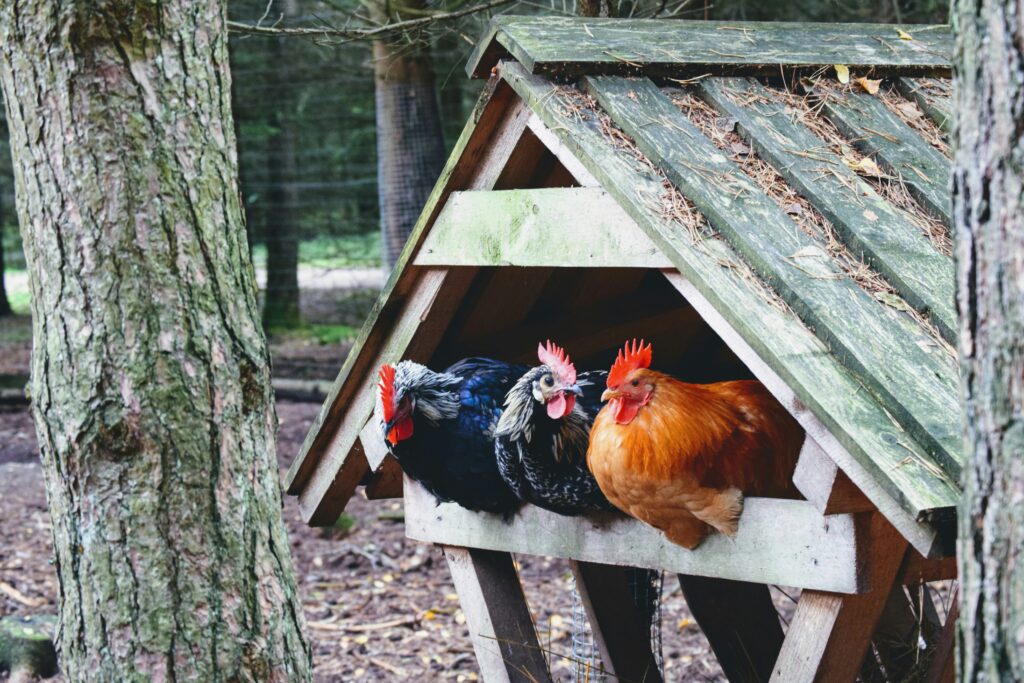
Photo by Marius Karotkis on Unsplash
Window and Door Insulation Tips
How to Seal Windows and Doors Properly
Drafty windows? Use shrink-wrap window insulation or heavy-duty plastic sheets. Doors can benefit from felt weatherstripping or foam tape around the edges.
Using Curtains, Flaps, or Double Glazing
Hanging old blankets or canvas flaps adds another buffer layer. You can even install plexiglass panels over mesh windows to retain light while blocking cold.
Soundproofing and Thermal Efficiency
Good insulation keeps chickens calm too. By dampening outside noises like traffic or barking dogs, your flock experiences less stress. That means more peaceful nights and better health.
Using Recycled Materials
Looking to save money? Use old yoga mats, flattened cardboard, or foam packaging as insulation layers. Just make sure materials are clean, dry, and safely enclosed.
Ventilation vs. Insulation
This is where many get it wrong—sealing a coop too tight can create stuffy, moist air. Even with great insulation, you need cross-ventilation near the roof. Add adjustable vents or ridge vents that won’t let drafts hit the birds.
Insulation Maintenance Tips
Inspect your insulation seasonally. Look for moisture damage, chew marks (from rodents), or mold. Reseal edges as needed, especially before winter. Clean debris or cobwebs that might block airflow near vents.
Common Insulation Mistakes
- Leaving insulation exposed
- Skipping ventilation
- Using unsafe or flammable materials
- Blocking exit routes or roosting spaces
- Over-insulating without airflow balance
Avoiding these saves both time and flock health.

Photo by Marius Karotkis on Unsplash
Winterizing Your Chicken Coop
Alongside insulation, add extra bedding, use heated water bowls, and check for snow or ice buildup on the roof. You can also hang tarps outside the coop to cut down wind chill.
Summer Cooling Techniques
Paint your coop in light colors, use reflective roofing sheets, and keep the coop shaded. Add frozen water bottles or jugs during heatwaves. Insulation isn’t just for winter—it helps maintain coolness too!
Frequently Asked Questions
What’s the best insulation for chicken coops?
Foam board is a top choice due to its efficiency and water resistance, but only when properly covered.
Can chickens overheat in an insulated coop?
Yes, if ventilation isn’t balanced. Always pair insulation with airflow.
How thick should insulation be in chicken coops?
1 to 2 inches is typically enough for most climates.
Is straw good insulation for coops?
Yes, but it must stay dry. Wet straw can mold and attract pests.
Can I use house insulation materials in a chicken coop?
You can, but make sure they’re sealed and not exposed to pecking.
Do I need to insulate my coop in a mild climate?
Even in mild zones, insulation helps stabilize temps and reduce stress.
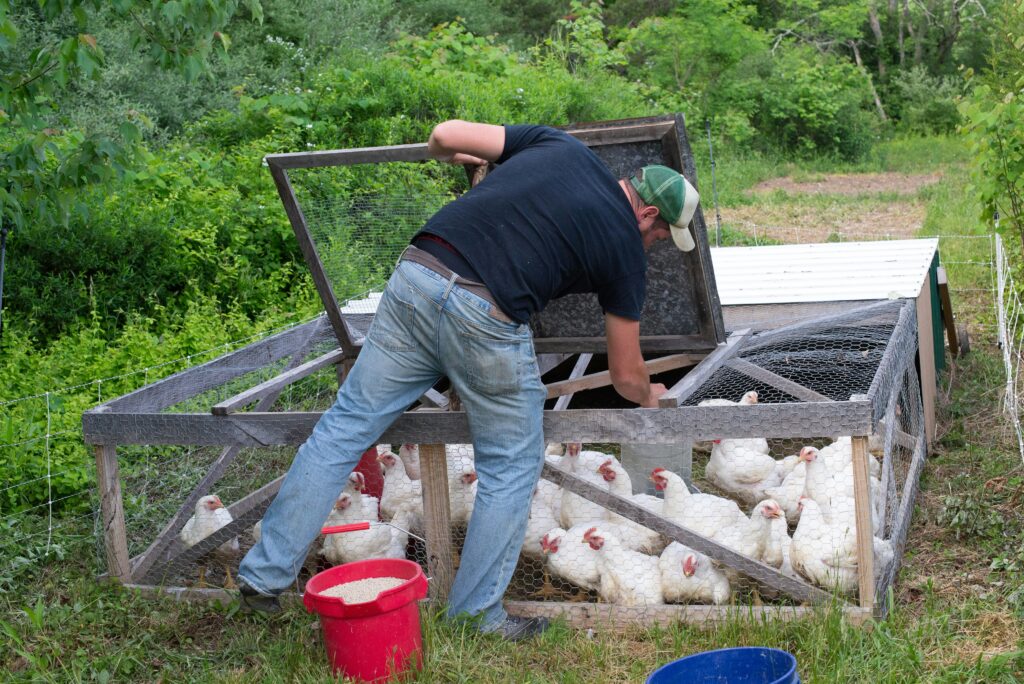
Photo by Zoe Richardson on Unsplash
Final Thoughts on Chicken Coop Insulation
Insulating your chicken coop isn’t just about braving the cold—it’s about creating a safe, stable, and productive environment for your birds. With the right materials, good airflow, and seasonal maintenance, you’ll protect your flock, cut down on stress, and enjoy healthier, happier chickens. Whether you’re raising Rhode Island Reds or Buff Orpingtons, insulation is the unsung hero of backyard poultry success.
